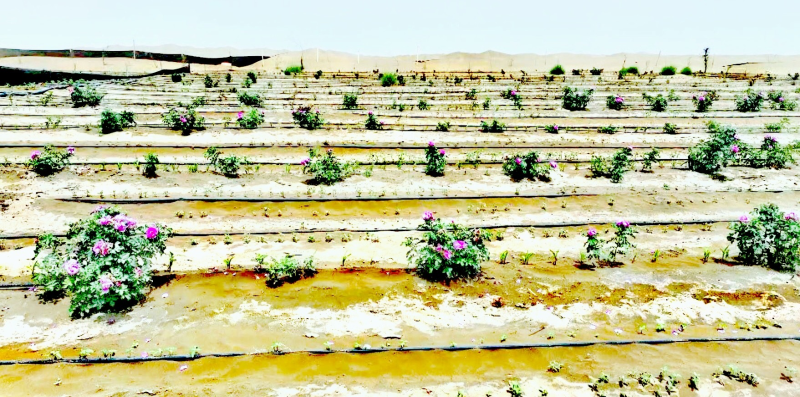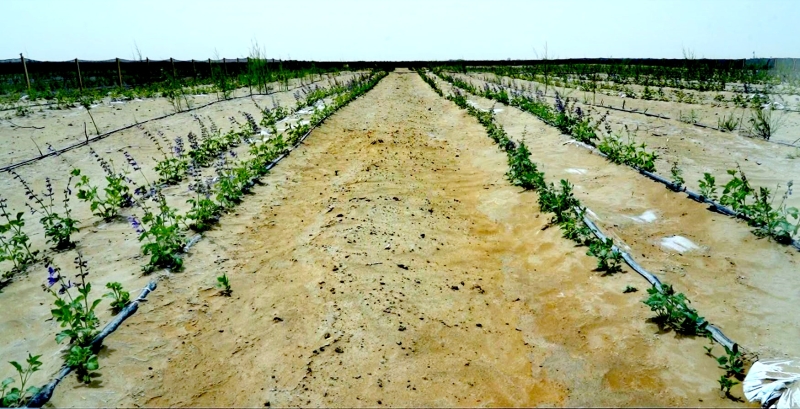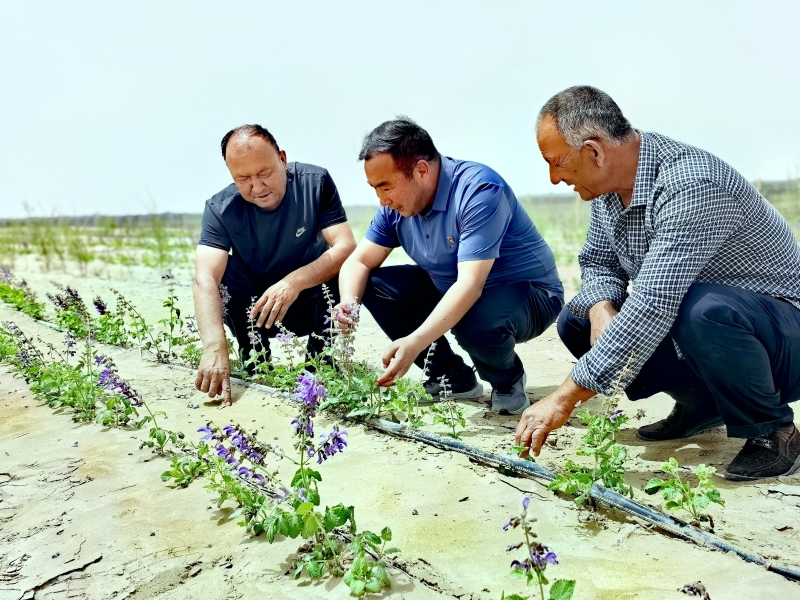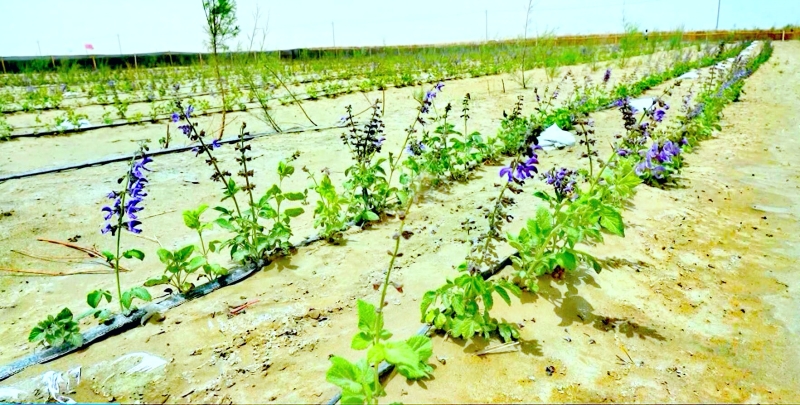In Yutian County, on the southern edge of the Taklimakan Desert, a unique ecological spectacle has emerged. Fields of pink and purple roses now sway alongside golden sand dunes, creating a breathtaking contrast. At the greenbelt along the edge of the desert, 100,000 rose plants are in full bloom, forming a "golden sea" of prosperity.
This land, once eroded by sand and wind, is now exploring a sustainable development path through an innovative model of intercropping forests with medicinal plants. It’s a triple win: stabilizing the desert, building a thriving flower industry, and enriching the local community through medicinal plant cultivation.

Photo shows roses planted in the desert in Yutian County, Hotan Prefecture, northwest China's Xinjiang Uygur Autonomous Region. (Photo by Maitinur)
In the green ecological barrier of the Taklimakan Desert, a sea of 100,000 rose plants sways gracefully, dressing the desert in a splendid "rainbow coat."
Amat Nuri, a farmer from Baiheti Village in Aoyituogelake Township, Yutian County, gazed at the sea of flowers and said, "This place was barren and lifeless in the past. Now, with the roses in full bloom, we can both control the sand and increase our income. We are so happy!"

Photo shows the 600-mu (one mu is about 667 square meters) experimental field of intercropping forest trees with traditional Chinese medicinal plants for sand industry in Yutian County, Hotan Prefecture, northwest China's Xinjiang Uygur Autonomous Region. (Photo by Maitinur)
Starting with rose cultivation as a means of desert containment, Yutian County has deeply integrated ecological management with industrial development. With the support of a 28.97 million yuan (about 4.06 million U.S. dollars) special fund, the county has built a 600-mu (one mu is about 667 square meters) experimental field of intercropping forest trees with traditional Chinese medicinal plants for the sand industry. This field serves as a frontline in windbreak and sand fixation, as well as a "technology test site" for medicinal plant cultivation.

Photo shows six types of traditional Chinese medicinal plants under pilot cultivation on sandy land show robust growth. (Photo by Mukrem)
Maitikasim Maitiruz, deputy secretary of the Party committee and township head of Aoyituogelake Township in Yutian County, explained that six types of traditional Chinese medicinal plants are being piloted on 600 mu of sandy land at the desert. The plants are thriving, with a survival rate far exceeding expectations. An 18-member professional team has been formed to take care of irrigation and maintenance.
In the experimental field, poplars and apricot trees form a "green barrier" against wind and sand. Medicinal shrubs such as Scutellaria baicalensis, Rehmannia glutinosa, and Forsythia suspensa are scattered in a staggered manner. This creates a three-dimensional ecological system that combines both trees and medicinal plants.
Through a scientific plan of "200 mu for one species, intercropping and relay planting," the mature varieties and technologies will be promoted to local farmers in the future. This model not only increases vegetation coverage and stabilizes sand dunes but also explores the economic value of authentic medicinal materials, allowing local people to truly share the benefits of sand control.

Photo shows staff members check the growth status of the plants. (Photo by Arezigul)
Rehemtula Idris, a local villager who has contracted 25 mu of sandy land near the desert to grow tamarisk trees, said that he plans to plant medicinal herbs on his land next year. He was inspired by the significant success of the township government's pilot base for medicinal plants. "This will not only increase my income but also contribute to the ecological construction of my hometown," he added.

Photo shows the plants in the experimental field thrive and have a survival rate far beyond expectations. (Photo by Mukrem)
Today, Yutian County has expanded its medicinal plant cultivation to cover 250,000 mu, establishing a tiered system of short-term, medium-term, and long-term medicinal plants. Licorice and Cistanche deserticola, which yield quick results, help stabilize the sand and generate immediate income. Wild jujube and sea buckthorn, with medium-term benefits, balance ecological protection with economic returns. Ginkgo and other arbor species, as long-term investments, form a stable protective forest system.
Once characterized by the romantic hues of pink and purple roses, Yutian County has now embraced the green promise of its medicinal plant bases. With innovation as its driving force, the county has successfully integrated ecological restoration and economic development on the edge of the Taklimakan Desert.
Looking ahead, Yutian will continue to perfect its intercropping model of forests and medicinal plants. By tapping into the potential of sandy land resources and expanding income opportunities for village collectives and villagers, the county aims to synchronize ecological management with rural revitalization. This forward-thinking approach will ultimately transform the desert into a true "field of wealth" for its people.
(The Media Convergence Center of Yutian County, Reporters: Arezigul Matohiti, Maitinur Maitiroza and Mukrem Matikurban)









